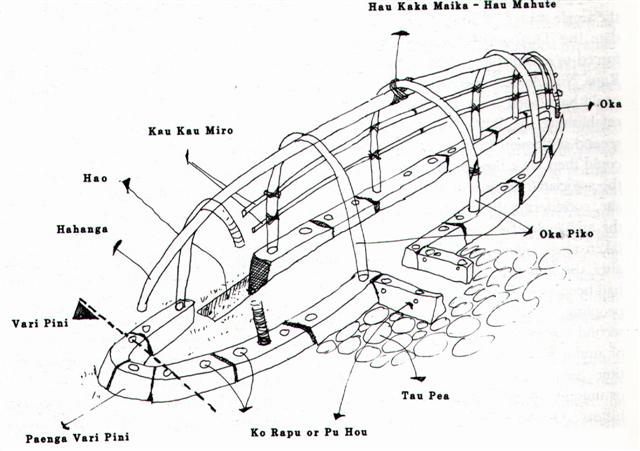3. In spring the Sun King will arrive from the sea to rule over the new land. We can guess complex rites were used on Easter Island, perhaps similar in structure to what we have learned about the Fijian old customs: ... Indeed, at the rituals of the installation, the chief is invested with the 'rule' or 'authority' (lewaa) over the land, but the land itself is not conveyed to him ... the Fijian chief is ritually reborn on this occasion; that is, as a domestic god. If so, someone must have killed him as a dangerous outsider. He is indeed killed by the indigenous people at the very moment of his consecration, by the offering of kava that conveys the land to his authority (lewaa). Grown from the leprous body of a sacrificed child of the native people, the kava the chief drinks poisons him ... The water of the kava, however, has a different symbolic provenance. The classic Cakaudrove kava chant, performed at the Lau installation rites, refers to it as sacred rain water from the heavens ... This male and chiefly water (semen) in the womb of a kava bowl whose feet are called 'breasts' (sucu), and from the front of which, tied to the upper part of an inverted triangle, a sacred cord stretches out toward the chief ... The cord is decorated with small white cowries, not only a sign of chieftainship but by name, buli leka, a continuation of the metaphor of birth - buli, 'to form', refers in Fijian procreation theory to the conceptual acception of the male in the body of the woman. The sacrificed child of the people will thus give birth to the chief ... The transition from number 16 to number 17 could possibly be connected with a kava ceremony when the new ruler is accepted by the woman of the land. We should note that lewaa means authority. The word is basically the same as reva in Hua Reva and revareva at Poike:
The Rising Sun at the paega hole of Poike is in contact, by means of the first oka, with the Rising Moon at the hole of Hua Reva, and together they will rule the land.
|
